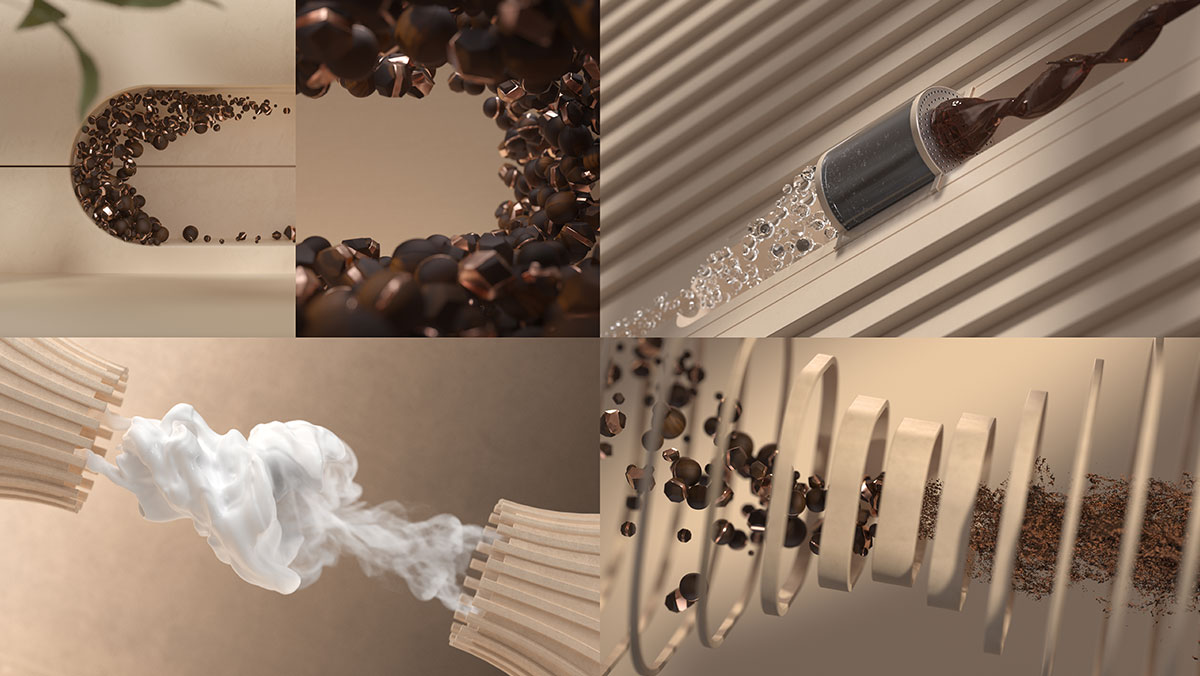
De’Longhi teamed up with Landor & Fitch for a transformative rebrand of the famous appliance brand, one that would help De’Longhi maintain its leading spot on the coffee machines market. In the words of Antonio Marazza, “Our strategic challenge was to give De’Longhi an authoritative and unmistakable role within the crowded coffee market”. And so they did.
Brandingmag decided to sit down with the key figures of this transformation to find out more about what brand transformation truly is and what challenges they faced in this quest: Antonio Marazza, General Manager at Landor & Fitch Milan, and Zeno Adami, Global Brand Director at De’Longhi. Here’s what they have to say:
Brandingmag: What is ‘brand transformation’ and how does it link to both brand and business strategy?
 Antonio Marazza: The resurgence of purpose and the rise of caring capitalism has helped put brand firmly back in the board room. Brand is now broader than ever in its impact and implications, informing experience, culture, innovation, recruitment, acquisitions, ESG, and workspace. It now has the attention and interest of the C-suite and is seen as a vital tool in delivering real change and business transformation.
Antonio Marazza: The resurgence of purpose and the rise of caring capitalism has helped put brand firmly back in the board room. Brand is now broader than ever in its impact and implications, informing experience, culture, innovation, recruitment, acquisitions, ESG, and workspace. It now has the attention and interest of the C-suite and is seen as a vital tool in delivering real change and business transformation.
Landor & Fitch analysis shows that brand represents approximately 33% of business value and is a critical growth driver – brand and business strategy, therefore are, and must be, connected. Brand transformation is an adjustment of differentiation drivers to remain relevant to a variety of audiences, while also attracting new ones. It creates powerful platforms that inspire extraordinary brand expression and experience – platforms that unite people and spark cultural change.
Bm: How is the need for a transformation determined and what does the process imply?
AM: The need for transformation usually arises via a reaction or an opportunity. Sometimes clients get in touch when they need to respond to the moves of their competitors or a changing market. Others seek out our consultation when – as per De’Longhi – they have identified a fundamental business opportunity that serves a wider purpose and vision for growth. We then bring together the best of our strategy and creative teams to deliver extraordinary brand transformation, by design. This will cover a bespoke range of brand services across strategy, expression, experience, culture, employees, brand management, and performance.
Bm: Is there any type of data involved in brand transformation? If so, how much data and at which point in the process? Why?
AM: The aim of brand transformation is to increase or retain business value. Therefore, it needs to be quantifiable and relatable to existing business data. At Landor & Fitch, we find out the brand’s intangible value through a proprietary tool, which also offers a clear before-and-after comparison and prediction of the brand transformation effectiveness in the long-term, too.
In addition, we recommend putting in place financial modeling tools to minimize uncertainty in brand-related, strategic decisions. This may include evaluating the potential of a brand re-positioning, optimizing the brand architecture, segmenting the offer or the target audience, or assessing whether a brand extension is necessary.
Bm: There’s an unpopular opinion that a sound marketing strategy is much better than a “big idea” morphed into attractive brand design and clever marketing tactics. What do you think?
 Zeno Adami: This reminds me of a famous commercial slogan by Pirelli: “Power is nothing without control” – meaning that ideas with the most potential are not bound to succeed if they are not executed perfectly across all touchpoints.
Zeno Adami: This reminds me of a famous commercial slogan by Pirelli: “Power is nothing without control” – meaning that ideas with the most potential are not bound to succeed if they are not executed perfectly across all touchpoints.
In my experience, it is better to have a “good enough” idea with sound execution and design, rather than a so-called “big idea” that works only on paper or in a boardroom presentation. Execution is the only strategy that consumers will ever see.
Bm: What makes for a great overall customer experience and how much does design weigh here (product and brand)? What about the sales funnel and post-acquisition?
ZA: An extraordinary experience is driven by a combination of simplicity and surprise. For me, a great, memorable experience has never come from being in line with my expectations or too complex.
Design has an incredibly valuable role in making life simpler for consumers, whilst delivering a creative flair. Who would have thought that a delicious espresso could be had at home by touching a button? Or even in a coffee lounge that is dedicated to experience and education? These are the questions and prompts that inspire our product development and pave the way for ‘firsts’ in our portfolio, such as the De’Longhi Experience Lounge in Sydney that we also collaborated on with Landor & Fitch.
Bm: How is the new idea of De’Longhi (the art of transformation) being carried over outside of brand communication? For example, in the product or retail experience?
ZA: For De’Longhi, “The Art of Transformation” is engrained in everything we do. From our production processes – where we mold plastic and prototypes in-house – to our own retail shops, where we bring to life the story, so consumers can understand the coffee process from start to finish.
For us, transformation is an ongoing journey that fills us with new surprises every day.
Bm: For Landor & Fitch, what were the challenges of developing a transformation for a global brand (120 countries), while staying true to heritage (Italian lifestyle) but also catering to the specific characteristics of local cultures?
AM: The most fascinating challenge for us in the Milan studio is finding the right balance between the simplified stereotypes that foreign consumers might expect from an Italian brand alongside the subtleties and complexities that make a brand attractive to domestic customers.
We found the perfect balance with De’Longhi. A brand that expresses the unmistakable Italian lifestyle that everyone dreams of, and one which is globally recognized and accessible. Through the innovative flexibility of its machines, anyone can have a coffee-based drink and enjoy it exactly how they like it.
Bm: What kind of value has this transformation brought to De’Longhi and what kind of return is the brand expecting in the near future from this endeavor?
ZA: Our partnership with Landor & Fitch has created a global visual language for the first time in the brand’s history. The team has helped us establish a clear color palette, a consistent photographic approach, and a detailed brand equity pyramid that all partners can always refer to.
The return we are seeing is impressive; consumers are clearly recognizing us through our consistent identity. We are moving from being a high-quality, small, domestic-appliance manufacturer, to a globally recognized, lifestyle expression. The “Perfetto” campaign with Brad Pitt, crafted by Damien Chazelle, is one of the best examples of the stories we want to tell as we think about our future.
Bm: Are there any changes that you would have done to the project if given a virtually unlimited budget and no creative constraints?
AM: None at all. We had no creative constraints and the client relationship has always been positive and constructive. When you are in tune with the business goals, you appreciate and respect the emotional impact a rebrand may have – especially one that still holds the family name.
Bm: Is there any piece of information (data) about consumers that’s impossible to obtain but you would love to have at your disposal if possible?
ZA: One of the most difficult things to map out is the purchase decision process. The information available is so vast, making it extremely difficult to predict what is influencing customer decisions. If I had a magic wand, I would magic a map that highlights what is most relevant to shoppers in their purchase decision journey.